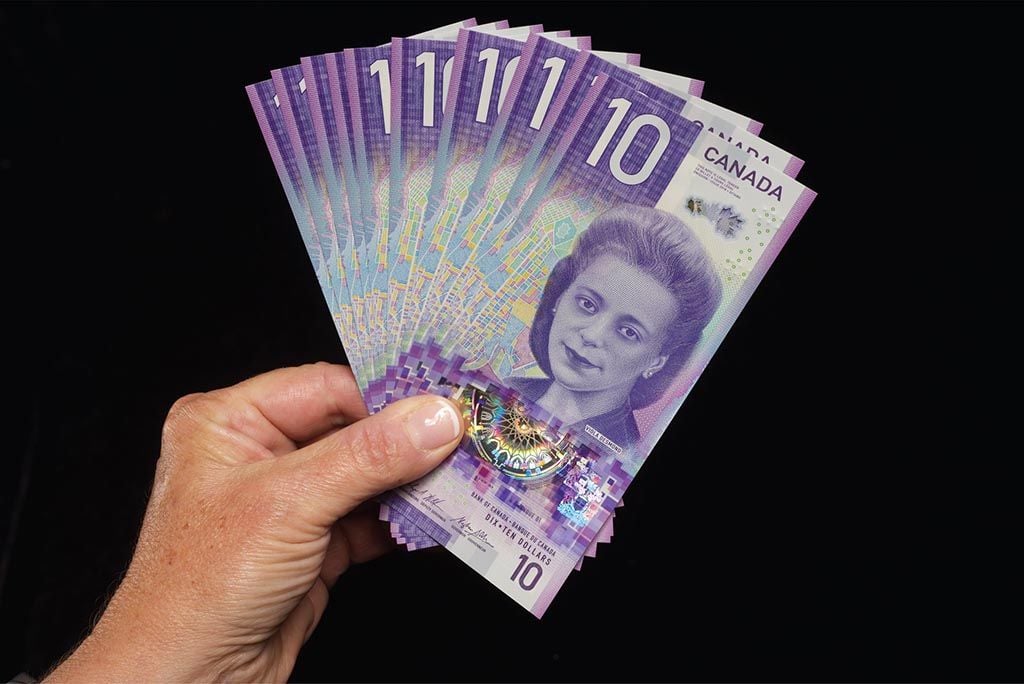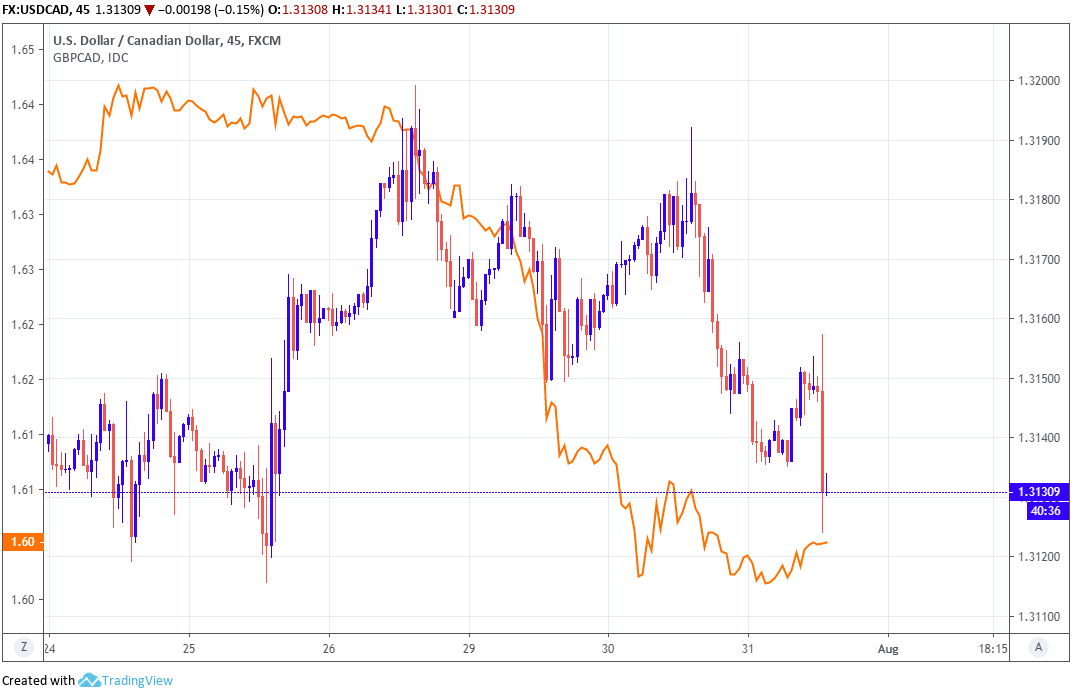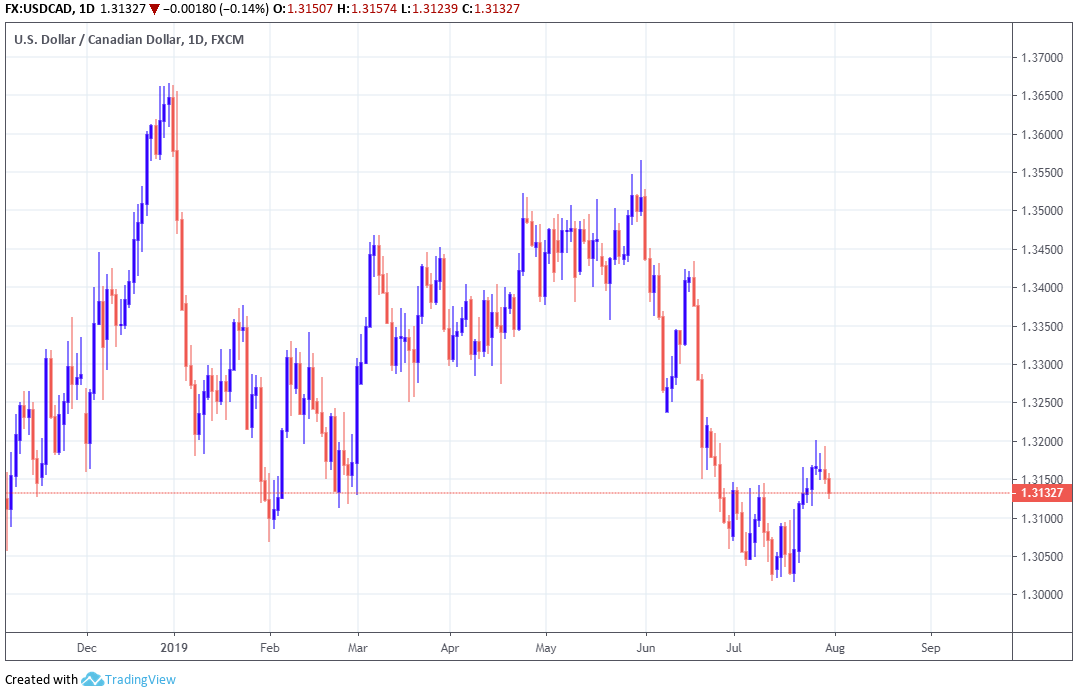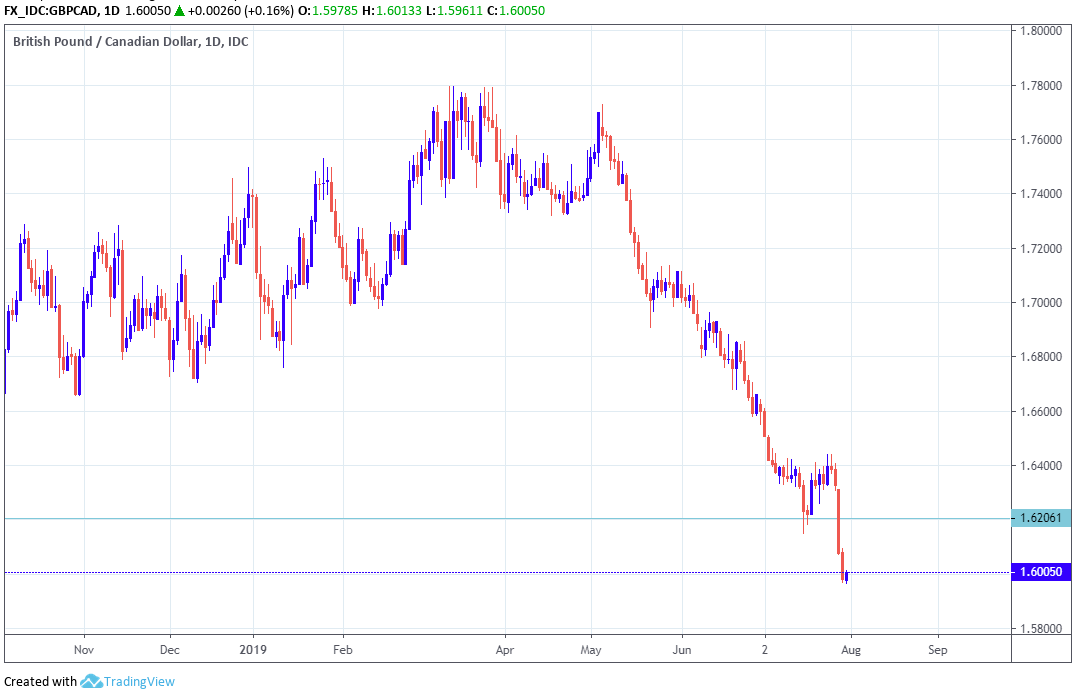The Canadian Dollar Shines after Economic Outperformance Continues with Third GDP Surprise
- Written by: James Skinner

Image © Bank of Canada
- CAD rebounds on third consecutive upside surprise for growth.
- Economy grew faster than even the BoC's revised GDP estimate.
- Data cements BoC in its stand pat position, keeps rates at 1.75%.
- But Fed decision a risk to USD/CAD rate Wednesday evening.
- GBP/CAD stabilises and UBS says Brexit fears are overdone.
The Canadian Dollar rebounded from earlier losses Wednesday after May GDP data left Canada's veneer of economic exceptionalism alive and well deep into the second quarter, reinforcing market expectations the Bank of Canada (BoC) will leave its interest rate unchanged for a while yet.
Canada's economy grew by 0.2% in May after already having expanded by 0.3% in the previous month, which has pushed the three-month rolling growth rate up to 0.7%. It's also left economic growth for the second quarter running ahead of the BoC's upwardly-revised estimate for an annualised pace of 2.4%.
May's increase was led by a rebound in the manufacturing sector, where output rose by 1.2%, although the construction sector also had a good month too. The retailing and wholesale trades saw output fall by 0.4% and 1.4% respectively during the recent month as consumers kept a tight lid on spending.
"Today’s solid reading for May leaves us tracking annualized growth of nearly 3% in Q2—above our earlier estimate and the Bank of Canada’s latest forecast. Strong growth in the last several months underscores why the BoC has maintained a neutral policy bias even as the Fed is set to lower rates, starting this afternoon," says Josh Nye at RBC Capital Markets.

Above: Canadian quarterly GDP growth rates. Source: RBC Capital Markets.
"The economy looks to be tracking a bit better than the Bank of Canada's 2.3% forecast, reinforcing their stand-pat stance for now, against a Fed ease expected later today. Supportive for the C$ today, and negative for short term rates," says Avery Shenfeld, chief economist at CIBC Capital Markets.
Currency markets care about the GDP data because it reflects rising and falling demand within the economy, which has a direct bearing on consumer price inflation, which is itself important for questions around interest rates. And interest rates themselves are a raison d'être for most moves in exchange rates.
Changes in interest rates are normally only made in response to movements in inflation, which is sensitive to growth, but impact currencies because of the push and pull influence they have over capital flows.
Capital flows tend to move in the direction of the most advantageous or improving returns, with a threat of lower rates normally seeing investors driven out of and deterred away from a currency. Rising rates have the opposite effect.
"CAD is quietly consolidating within a tight range as it attempts to retrace a slight portion of the decline from its mid-July high," says Shaun Osborne, chief FX strategist at Scotiabank.

Above: USD/CAD rate shown at 15-minute intervals, alongside GBP/CAD (orange line, left axis).
"That said, we continue to view Q2s healthy growth as flattered by comparison to the weak levels seen in the prior two quarters, and look for growth to moderate again before year end as slower global growth impedes the trade sector," CIBC's Shenfeld adds, in a note to clients following the release.
Canadian GDP rose 0.3% back in April after having risen an even larger 0.5% in March, as growth rebounded from the trough created by an oil price crash in the final quarter of 2018, but which has played out against the backdrop of a deepening global economic slowdown.
The BoC described that strength as "temporary" in July and emphasised risks to the outlook, but otherwise stuck to its guns as far as guidance goes, signalling that no change in its interest rate is likely in the short-term.
It says the 1.75% cash rate is "accomodative" for the economy and that it will pay particular attention to "developments in the energy sector and the impact of trade conflicts on the prospects for Canadian growth and inflation" when making future interest rate decisions.
This is in contrast to the outlook for interest rates in almost all other parts of the developed world. Only central banks in Norway and Sweden have anything like an appetite to lift rates while all the rest of them are either already cutting borrowing costs in an effort to support their economies, or are expected to do so over the coming months.
Canadian bonds and the Loonie have become more attractive to international investors who're searching for yield as a result of this apparent economic superiority, but there are risks to both lurking up ahead.
"Relative central bank policy remains dominant and yield spreads appear to be stabilizing following their CAD-negative widening from early July. Our fair value estimate is extending its modest recovery from last week’s low (USDCAD 1.2920 last Thursday to 1.2700 today)," Scotiabank's Osborne says.

Above: USD/CAD rate shown at daily intervals.
"Price action is above key resistance at the 1.3150 mark currently and attempting to gain a foothold. If you’re of the view that the Fed’s actions will be interpreted as a ‘hawkish cut’ for tomorrow, then it makes sense to position for upside in USD/CAD," says Bipan Rai, head of FX strategy at CIBC.
Rai is concerned the Canadian Dollar could be found wanting in the wake of its recent gains if the Federal Reserve under delivers against lofty market expectations for rate cuts over the coming months.
The latest Fed decision is due at 19:00 Wednesday and analysts are overwhelmingly looking for it to cut rates 25 basis points to 2.25% before following up with two more cuts later this year, which would take the U.S. benchmark for borrowing costs back to 1.75% and the same level it was at in March 2018.
However, there's a number of reasons for why Wednesday's decision may not be quite the done deal markets assume it is, not least of all changes to the so-called 'dot-plot' of Fed forecasts for rates up ahead and a U.S. economy that's also recently performed better than the market expected.
CIBC has recommended that clients use currency 'options' to exploit any possible increase in the USD/CAD rate over the coming weeks as a result of anticipated Fed "hawkishness" on Wednesday.
"Chair Powell’s 2:30pm ET press conference will be key, as market participants assess the outlook for growth and the prospect of additional cuts this fall. Markets are currently pricing about 90bpts in Fed rate cuts over the next 12 months," Scotiabank's Osborne says.

Above: Pound-to-Canadian-Dollar rate shown at daily intervals.
The Pound-to-Canadian-Dollar rate stabilised Wednesday after falling to its lowest level since September 2017 which was when, fearing for the impact that rising import costs would have on inflation, the Bank of England (BoE) warned that it was looking to raise interest rates. in order to safeguard its 2% inflation target.
However, and despite the newfound stability, the Pound was down 7.8% against the Canadian Dollar for 2019 on Wednesday after falling 3.25% in July alone and Scotiabank analysts have warned there's a risk that it falls further during the weeks and months ahead, to what would then be a six-year low.
"Daily bear trend signals are strengthening again and today’s losses have reached a marginal new cycle low. Absent a swift recovery through 1.66—which looks a dubious prospect—we think risks are tilting back towards the overshoot to 1.57 we had feared following the attainment of the 1.61 bear target outlined following the May/Jun consolidation breakdown," says Eric Theoret, a technical analyst at Scotiabank.
Sterling has been clobbered this week after Prime Minister Boris Johnson's honeymoon period was brought to an abrupt end by short-sellers responding to the UK government's latest pivot in the Brexit negotiations. The government has eschewed Brexit talks with the EU and claims it'll take the UK out of the bloc via a 'no deal' Brexit at the end of October if Brussels does not agree to remove the so-called Northern Irish backstop from the agreement it struck with former Prime Minister Theresa May.
The EU has long claimed it won't entertain altering the withdrawal agreement, which risks entrapping the UK or parts of it inside the customs union and beneath the EU's legislative umbrella indefinitely if the government cannot satisfy Brussels' demands in the next stage of the negotiations. Failure to agree terms before October 31 will result in the UK defaulting to doing business with the EU on World Trade Organization (WTO) terms if the Prime Minister does not request another Article 50 extension.
"In our view, the sense of inevitability about a no-deal Brexit that is creeping into markets and media coverage is misplaced. A no-deal exit on 31 October remains a risk, but our view is that this is more likely to happen by accident rather than design. What we are likely to see in the weeks ahead is a Brexit reset," says Mark Haefele, chief investment officer at UBS Global Wealth Management.
Time to move your money? Get 3-5% more currency than your bank would offer by using the services of foreign exchange specialists at RationalFX. A specialist broker can deliver you an exchange rate closer to the real market rate, thereby saving you substantial quantities of currency. Find out more here.
* Advertisement




